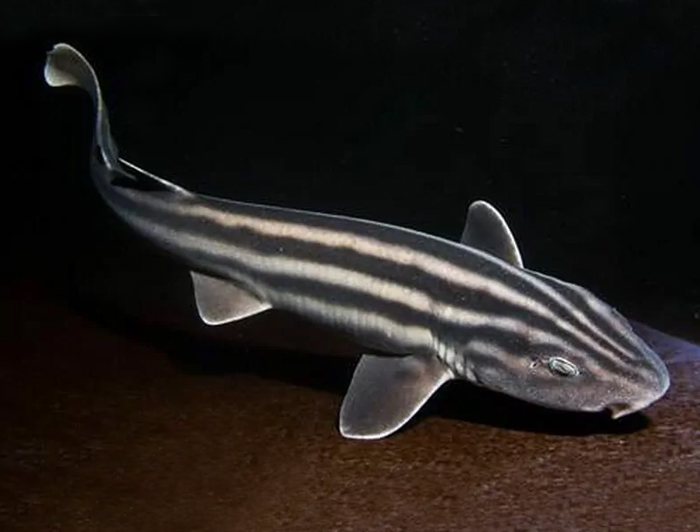Pyjama Cat Shark
Pyjama Shark (Poroderma africanum)
The Pyjama Shark, also known as the Striped Catshark, is a species of catshark belonging to the family Scyliorhinidae and is native to the coastal waters of South Africa. This bottom-dwelling shark is commonly found in habitats ranging from the intertidal zone to depths of around 100 meters (330 feet), especially over rocky reefs and kelp beds. It is easily recognizable by its stout body adorned with thick, parallel dark stripes and a distinctive appearance. The Pyjama Shark has a short head and snout, along with slender barbels that do not reach the mouth, and two dorsal fins positioned far back on its body. It can reach a length of up to 1.1 meters (3.6 feet).
Primarily nocturnal, the Pyjama Shark spends most of the day resting motionless in caves, crevices, or among vegetation, often in groups, particularly during the summer months. As an opportunistic predator, it feeds on a variety of fishes and invertebrates, with a particular preference for cephalopods such as the chokka squid. When threatened, the shark displays a defensive behavior by curling into a ball with its tail covering its head. It reproduces oviparously, with females laying rectangular, dark brown egg cases in pairs throughout the year. This small, harmless shark adapts well to captivity and is frequently seen in public aquariums. Although it is sometimes caught as bycatch and considered a pest by some fishers, there is no evidence of a decline in its population. The International Union for Conservation of Nature (IUCN) has classified the Pyjama Shark as Least Concern.
The Pyjama Shark was first described by Scottish zoologist Andrew Smith in 1838. Over time, it has been recognized for its distinct coloration and pattern. It belongs to the genus *Poroderma* within the family Scyliorhinidae. The species name *africanum* reflects its African distribution. The Pyjama Shark’s unique striped pattern and its adaptation to various habitats make it a notable species within its family.
